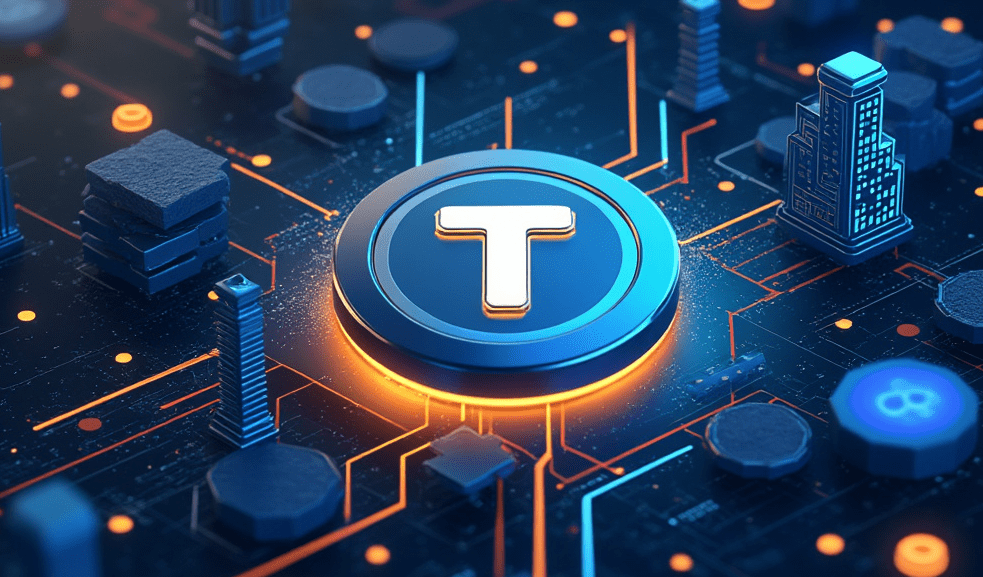Tether, the issuer of the world’s most widely used stablecoin, USDT, has announced its expansion onto the Aptos blockchain. This strategic move aims to capitalize on Aptos’ scalability and ultra-low transaction fees, making digital currency more accessible and practical for a wide range of users. By integrating USDT into the Aptos ecosystem, Tether seeks to enhance the utility of its stablecoin, particularly for microtransactions and large-scale enterprise operations.
Tether’s Strategic Expansion to Aptos
In a press release shared with Cointelegraph, Tether outlined its rationale for choosing Aptos as the next blockchain to support USDT. Aptos’ key advantages—scalability and low transaction costs—align perfectly with Tether’s mission to make digital currency use more widespread and economically viable. With transaction fees on Aptos costing just a fraction of a penny, Tether believes this integration will make USDT more attractive for everyday use, particularly in scenarios requiring frequent or high-volume transactions.
Paolo Ardoino, CEO of Tether, expressed his enthusiasm for the partnership, stating, “The team at Tether is excited to integrate and collaborate with the Aptos ecosystem, enhancing our commitment to making digital currencies more accessible and functional.” This collaboration underscores Tether’s ongoing efforts to broaden the reach of USDT and ensure its stablecoin remains a cornerstone of the digital currency landscape.
Aptos Blockchain: A Rapidly Growing Ecosystem
Aptos has quickly become a prominent player in the blockchain space, experiencing significant growth throughout 2024. According to the press release, the number of average daily active users (DAU) on Aptos increased from 96,000 in January to 170,000 by July. Additionally, the blockchain set a new record in May 2024, processing an astounding 157 million transactions in a single day. This surge in activity highlights Aptos’ potential to support large-scale operations and high-transaction environments, making it an ideal platform for Tether’s expansion.
The addition of USDT to the Aptos blockchain is expected to further fuel this growth, attracting more users and developers to the ecosystem. By offering a stablecoin with near-zero transaction fees, Aptos and Tether are poised to make significant strides in enhancing the efficiency and cost-effectiveness of digital currency transactions.
Partnerships Enhancing the Aptos Ecosystem
The collaboration between Tether and Aptos is not the only recent development aimed at strengthening the Aptos blockchain. On July 17, Nansen, a leading blockchain analytics provider, partnered with Aptos to bring its on-chain analytics and data tools to the ecosystem. This partnership is designed to empower users and investors within the Aptos community, providing them with the insights needed to navigate the blockchain’s rapidly evolving landscape.
Alex Svanevik, CEO of Nansen, emphasized the importance of this partnership, stating that it would equip crypto teams with the necessary tools to “delve deeper into the Aptos ecosystem.” By integrating advanced analytics, the partnership aims to support the growth of Aptos by enabling more informed decision-making among its users and stakeholders.
Tether’s Legal Challenges: The Celsius Lawsuit
While Tether continues to expand its influence in the blockchain space, it is also facing legal challenges. On August 10, the defunct cryptocurrency exchange Celsius filed a $3.5 billion lawsuit against Tether. The lawsuit alleges that Tether misappropriated assets during a loan agreement with Celsius, specifically concerning the liquidation of 39,543.42 BTC used as collateral.
According to the lawsuit, Tether liquidated the BTC at a price that nearly covered the debt without allowing Celsius the opportunity to provide additional collateral. Celsius claims this action was improper and seeks returns, damages, and legal fees as a result.
This legal battle comes at a time when Tether is focusing on expanding its operations and solidifying its position in the global digital currency market. The outcome of the lawsuit could have significant implications for Tether, but it has not deterred the company from pursuing new opportunities, such as its recent expansion onto the Aptos blockchain.
Tether’s integration of USDT into the Aptos blockchain marks a significant step in the evolution of digital currency accessibility and usability. By leveraging Aptos’ low transaction fees and scalability, Tether is positioning its stablecoin as a more viable option for everyday transactions and large-scale operations. As the Aptos ecosystem continues to grow, this partnership is likely to drive further innovation and adoption within the blockchain space.
However, Tether’s ongoing legal challenges, such as the lawsuit from Celsius, underscore the complex landscape in which the company operates. As Tether navigates these challenges, its ability to expand and innovate will be closely watched by the broader cryptocurrency community.












